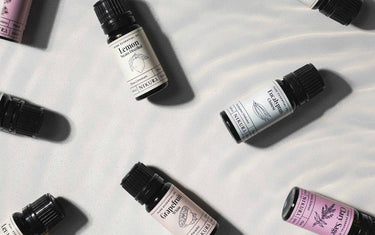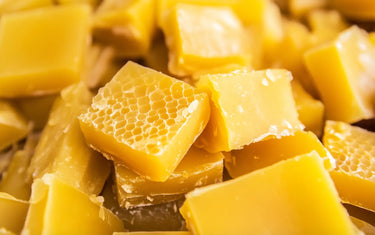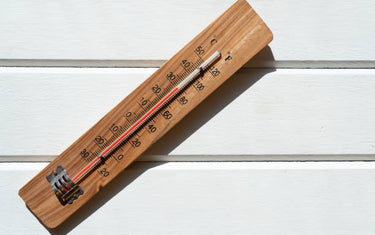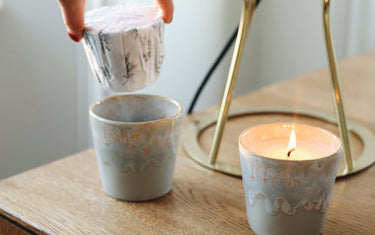6 min read / 21 February 2024 / yasmin sharp
How to Use Essential Oils
Discover the transformative power of essential oils for wellness, from aromatherapy to skin care, in our comprehensive guide.

From helping sleeping patterns and easing anxiety to treating skin conditions and keeping your home bacteria free, essential oils have a growing reputation for improving wellness.
Many people are already aware that they smell nice and work wonderfully in diffusers – although their potential extends far beyond adding a memorable fragrance to the room.
To explain how, we delve into the best ways to use essential oils to help you unlock a whole new level to your wellness experience.
What are essential oils used for?The first step in learning how to use essential oils is gaining a clearer understanding of what they are used for. Thanks to their versatility, there are several ways you can add their benefits to your day-to-day routine, with their natural properties offering support for your mind and body. Some common uses of essential oils are:
There is no right or wrong way to use essential oils, as it all comes down to how you feel comfortable integrating them into your lifestyle. |

How to use essential oils
To give you more insight into how to use essential oils effectively, we go into more detail about each of the methods we listed above.
1. How to use essential oils in aromatherapy
This is one of the core uses of essential oils, with aromatherapy being the go-to option for many people who intend to use their oils on a regular basis.
A common delivery device is through a diffuser or oil burner, as this allows the oils to naturally disperse into the air, filling the room with mind cleansing aromas, helping you to relax, unwind and find a sense of calm.
As an example, diffusing lavender oil can act as a mild sedative, working to reduce stress and anxiety levels. [1]
Relaxing brain waves are also said to lower cortisol levels that are a key contributor to the stress hormone.
Clary sage essential oil is another popular option, and researchers have found that inhaling the oil can reduce cortisol plasma levels in menopausal women. [2]
Separate studies have also shown that aromatherapy could work as a treatment for anything from sleep and pain, to dementia and alopecia. [3] [4] [5] [6]
2. How to use essential oils as part of a massage
Many massage oils often come with a certain amount of essential oils already included in the formula, although you could gain more benefits by making your own at home.
When applying any essential oil to your skin it should always be diluted with a carrier like jojoba, coconut or sweet almond, as this makes them more palatable for absorption and reduces the risk of irritation.
It is also recommended that first-time users complete a patch test as this will give you a clearer indication of how compatible it is with your skin.
Not only can massaging with essential oils offer psychological benefits, but studies also suggest that it can help with the management of conditions such as dysmenorrhea and infantile colic. [7] [8]
If you're not sure how to dilute your essential oils for a massage, take a look at our complete guide, which will tell you everything you need to know.
You might also find it helpful to look at our guides on the best essential oils for use in a massage as well as the best carrier oils to use for massage.
3. How to use essential oils in a bath
An easy way to experience the wellness benefits of essential oils is by adding a few drops to warm bath water, which works similarly to the aromatherapy method described above.
Before adding essential oils to bath water you should dilute with a carrier oil of choice, as it will be coming into contact with your skin.
Another option could be to add a few drops of an undiluted essential oil to the shower walls and inhale deeply as you shower.
You could also add a few drops directly to your body wash, shampoo or conditioner and use these products as usual.

4. How to use essential oils on skin
When diluted correctly, the natural properties contained in essential oils can have a lot to offer your skin, from improving its elasticity to preventing oxidation. [12] [13]
As we discussed with massages, when essential oils are coming into contact with skin, they should always be diluted to decrease their potency.
And similarly, if you are using a particular essential oil for the first time, always complete a patch test before applying it to large areas of skin.
Some essential oils, such as cedarwood, lemon and tea tree can be used to reduce the appearance of acne, and whilst more in-depth research is needed, some studies suggest that skin diseases could be treated with certain oils. [15]
If you want to try natural skincare, but are not sure where to begin, take a look at our recipe for how to make a cleansing skin tonic using geranium and neroli essential oils.
5. How to use essential oils for dry evaporation
If you do not have access to a diffuser and want to learn how to use essential oils via inhalation, then you may want to try the dry evaporation approach.
To start, find yourself a piece of dry fabric or a cotton ball. Add a few drops to the material and simply hold it underneath your nose and inhale, which will allow the scent to drift into your airwaves.
This also gives you more flexibility on how you use your essential oils, as you can carry the material with you outside of your home, which can be a great help if you are having a stressful day.
6. How to use essential oils in soap making and candle making
Essential oils are a key part of the soap and candle making process, as they combine brilliantly with all types of wax to produce strong and long-lasting scents.
Whilst fragrance oils are also commonly used in candle and soap recipes, because they are synthetically created scents, they are not able to offer the same therapeutic properties as essential oils.
All of our essential oils are suitable for candle making, soap making, and other similar creative projects.
To learn more, read our beginner's guides on how to use essential oils in candles, soaps and wax melts, which will teach you everything you need to know to get started.

Hopefully our article on how to use essential oils gives you a better idea of the many ways they can be adapted to your lifestyle.
Aromatherapy and dry evaporation are ideal for inhaling the scents, and using the oils as part of a massage or skincare routine can help your mind and body.
Or you can add them to a nice relaxing bath or include the oils as part of a candle or soap recipe.
And remember, always dilute before applying an essential oil to your skin and carry out a patch test when using an oil for the first time.
[1] Davide Donelli et al. (2019) Effects of lavender on anxiety: A systematic review and meta-analysis https://www.sciencedirect.com/science/article/pii/S0944711319303411
[2] Kyung-Bok Lee et al. (2014) Changes in 5-hydroxytryptamine and cortisol plasma levels in menopausal women after inhalation of clary sage oil https://pubmed.ncbi.nlm.nih.gov/24802524/
[3] Qiuting Wang et al. (2022) Effectiveness of Aromatherapy on Ameliorating Fatigue in Adults: A Meta-Analysis https://www.ncbi.nlm.nih.gov/pmc/articles/PMC9020949/
[4] Shaheen E. Lakhan et al. (2016) The Effectiveness of Aromatherapy in Reducing Pain: A Systematic Review and Meta-Analysis https://www.ncbi.nlm.nih.gov/pmc/articles/PMC5192342/
[5] Emily L Ball et al. (2020) Aromatherapy for dementia https://www.ncbi.nlm.nih.gov/pmc/articles/PMC7437395/
[6] Yunes Panahi et al. (2015) Rosemary oil vs minoxidil 2% for the treatment of androgenetic alopecia: a randomized comparative trial https://pubmed.ncbi.nlm.nih.gov/25842469/
[7] Froozan Bakhtshirin et al. (2015) The effect of aromatherapy massage with lavender oil on severity of primary dysmenorrhea in Arsanjan students https://pubmed.ncbi.nlm.nih.gov/25709705/
[8] Bengü Çetinkaya et al. (2012) The effectiveness of aromatherapy massage using lavender oil as a treatment for infantile colic https://pubmed.ncbi.nlm.nih.gov/22435980/
[12] Tatiana Mosquera et al. (2020) Changes in Skin Elasticity and Firmness Caused by Cosmetic Formulas Elaborated with Essential Oils of Aristeguietia glutinosa (matico) and Ocotea quixos (ishpingo). A Statistical Analysis https://www.mdpi.com/2079-9284/7/4/95
[13] V Calabrese et al. (1999) Oxidative stress and antioxidants at skin biosurface: a novel antioxidant from lemon oil capable of inhibiting oxidative damage to the skin https://pubmed.ncbi.nlm.nih.gov/10713866/
[15] Ané Orchard et al. (2017) Commercial Essential Oils as Potential Antimicrobials to Treat Skin Diseases https://www.ncbi.nlm.nih.gov/pmc/articles/PMC5435909/









